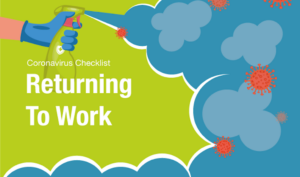
The Near Future of Work: What’s Next for the Office?
More than a year after the COVID-19 pandemic first upended work and life, business owners, HR leaders, and workers are continuing to adjust to an

More than a year after the COVID-19 pandemic first upended work and life, business owners, HR leaders, and workers are continuing to adjust to an

What do you think of when someone mentions payroll? Does your mind immediately conjure up an employee asking you for help regarding incorrect calculations and

As a human resources professional, you’re no stranger to thinking on your feet and solving complex problems. You never quite know what you’re going to

Since time immemorial, the one question that has dogged management gurus is: What is the main purpose of business? Is it to make profits? To

According to new CDC vaccine guidelines, vaccinated individuals can now safely gather indoors without a face covering. This is an exciting development after more than

The pandemic has brought significant physical and mental health concerns to people around the world. With business closings, reductions in force, and forced isolation for

Welcome to Workplace 3.0… How our workspaces have transitioned! There was a time not so long ago when most of us led dual lives –

Thus far into the COVID-19 crisis, mental health and well-being have dropped a staggering 33 percent. As a result, many employees are no longer content

Few global events have dramatically transformed the world of work as the COVID-19 crisis. Perhaps the most critical issue to the modern workforce, its impact

What is digital fatigue? And how does it impact your business and the people who work there? Think of how many times you interact with

About one year ago, organizations learned they could no longer work from a single physical location due to logistical or health restrictions caused by COVID-19.

Women in the workforce have always faced a lack of upward mobility, unequal pay, and suppression of our talent in the workplace. Now, let’s add

Even with vaccinations in sight, COVID-19 continues to ravage world health and drag economies downward. The resulting recession – the shecession – in the United

Throughout my conversations with people in the world of work, I hear these questions every March — about the time we start celebrating Women’s history

There are more than 107 million recorded COVID-19 cases worldwide. As economies begin progressively reopening after lockdowns, it’s increasingly likely that workplace COVID-19 will hit

Hiring during the prolonged COVID-19 crisis hasn’t gotten any easier. This is especially true for smaller companies struggling to be recruiting contenders without necessarily having

Once upon a time, we assembled around the office coffee machine to discuss what antics happened over the weekend. Now, of course, COVID-19 has wholly

2020 was a year of job losses and significant changes for human resources and hiring teams. While the pandemic will eventually come to an end,

Should business leaders be worried about the new COVID strains originating in the UK, South Africa, Brazil, and elsewhere — and recently identified in the

Planning and executing a successful job search has never been easy. Add the impact of the pandemic, and the degree of difficulty increases exponentially. Last

It’s that time of year again. Time to look back on TalentCulture’s Top 5 posts of 2020! Not surprisingly, many of our most-read posts of

Are your remote work policies sustainable? Is your company culture still viable? Are your employees really ok? Over the past few months, many experts (hundreds!)

At TalentCulture, we’re looking ahead to the day we can get back to work. And we’re looking for innovative solutions that will make that transition,

Writing an employee termination letter is a most unpleasant situation for HR professionals. But it’s also something you can’t put off or avoid. Writing such

The COVID-19 pandemic has disrupted our work. The pandemic has changed how we relate with our families. It has also impacted our sense of safety,